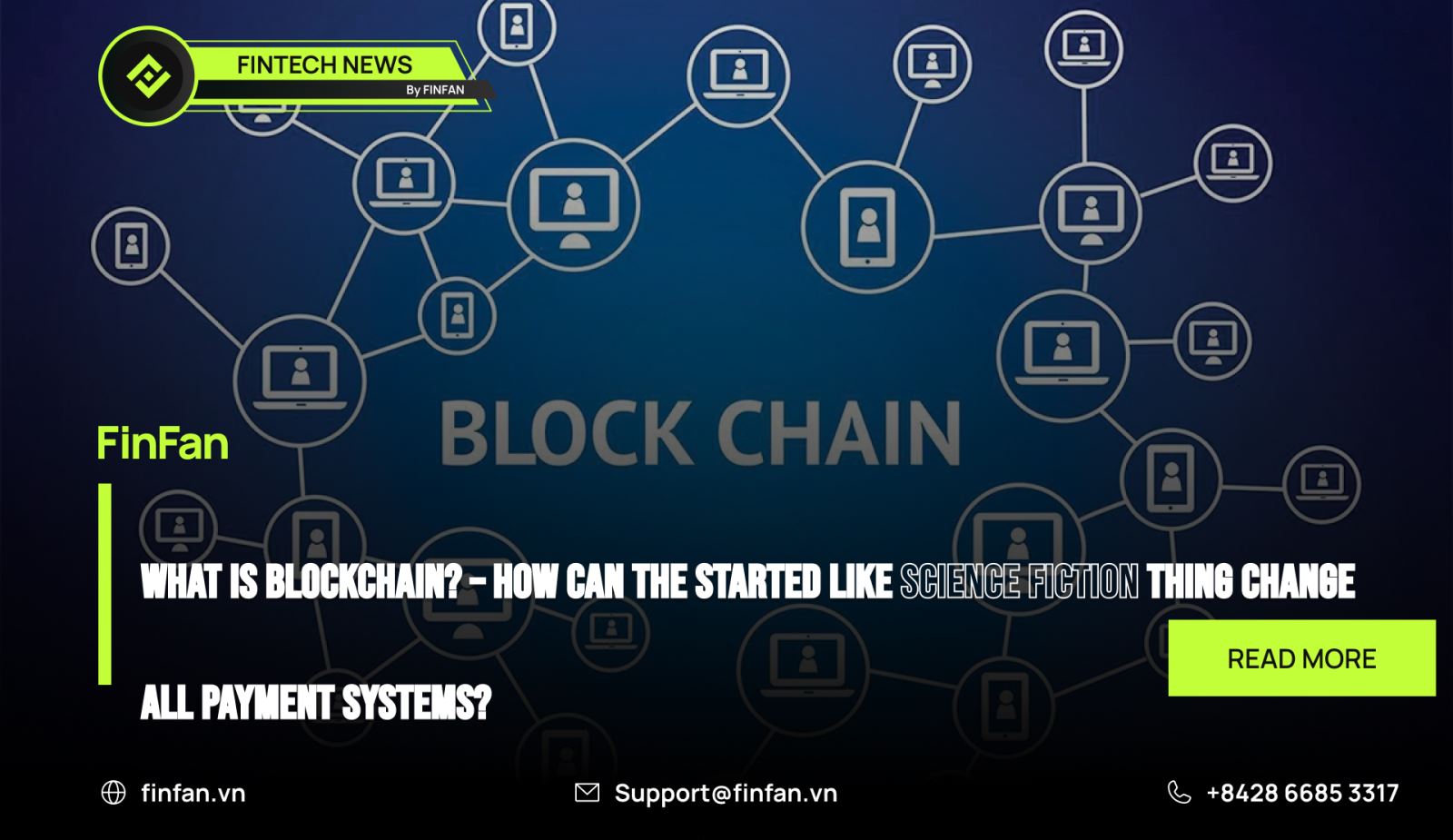What is blockchain? – How can the started like science fiction thing change all payment systems?

What is blockchain? Today, the term blockchain is no longer strange to us. However, more than 10 years ago, if anyone asked about a currency called cryptocurrency that can be transferred to each other at a speed of milliseconds or faster, without intermediaries and not subject to central bank control; and this virtual currency can use in real life instead of in games (born from blockchain technology) people will think it only exists in sci-fi movies.
However, since the appearance of Bitcoin, blockchain has become popular like a phenomenon, and continued taking effect on payment systems.
What is blockchain?
A blockchain is a distributed database or ledger shared among a computer network's nodes.
Some other terms related to blockchain.
*A “node" refers to a device–like a computer–connected to a network.
Transactions are approved by “validator" nodes (also called “miners") that reach a consensus (agreement) using a dedicated algorithm or set of rules.
A "block" contains approved transactions.
When strung together, a series of blocks—called a "blockchain"—hold the history of these transactions.
The content of a block is cryptographically protected (locked by a code) and visible only to users with the appropriate “key".*
How does blockchain work and why do they call it the most secure and hardest to hack?
Blockchain can work with both private blockchain and public blockchain, the difference between them is the permission of users to access the blocks in the chain.
Blockchain can be called the most secure and hardest to hack because of its consensus mechanism and decentralized mechanism.
- The consensus mechanism
The consensus mechanism brings information unification of many nodes on the same block in the chain. That leads to information in a block that can’t be changed as soon as it enters the ledger. That's what an “immutable ledger” is. If there's an error in the blockchain, another block must be added to reverse the error.
Because of this, when hackers want to hack the information in a blockchain, they have to fix the information of a node in a block which can lead to an error in the blockchain like the above situation. During the time that the hacker created a new block, the other nodes in the old block discovered it and fixed it.
There are 2 types of popular consensus mechanisms today, Proof-of-Work and Proof-of-Stake.
- The decentralized mechanism
**In a decentralized blockchain network, each participant can join the network. And each validator node (or miner) verifies the data or transaction. This process is handled through a consensus mechanism that verifies the transaction is valid. No central authority, like a government or bank, is needed to approve the transaction.**
What are the advantages and disadvantages of using blockchain in cross-border payments?
Benefits that blockchain brings to cross-border payments.
- The speed of transactions
If normally, a transaction that wants to be approved must go through strict regulations of each territory and country in the world. Even though technology has been invented to make transactions faster, it still takes a certain amount of time for the recipient to receive the money from the sender in 2 different countries.
With the decentralized mechanism of blockchain, the duration of transactions will be shorter because they won’t be controlled or restricted by an organization or individual.
- The transparency of transactions
Because of the consensus mechanism, anyone with the proper credentials can view transactions anytime. The entire history of the transaction is unchangeable and traceable.
- The privacy and security
Like the above information, the consensus mechanism can help all transactions to be secured and hackers cannot access easily and change the information of a node in a block.
Although there are two types of blockchains: private blockchain and public blockchain, however, even if transactions are performed on the public blockchain, the content inside the blocks will be secure and very and cannot be seen by outside users. Get personal information on the transactions.
That's why when exchanges announce huge transactions of participants, or there is an extremely large price manipulation case on the exchange, what we see is only the sender's wallet code and the recipient, in addition, no further information will be displayed and only if the user self-publishes on the social networks will we know the wallet is owned by them.
Disadvantages that blockchain brings to cross-border payments.
- It is a favorable opportunity for money laundering and corruption cases to develop.
The decentralized and consensus mechanisms have also their weakness. Because it is not regulated by any country and has high security and is difficult to identify, money launderers often use blockchain technology as a tool to be able to perform illegal acts.
Most recently, a shocking case happened against the cryptocurrency exchange that was said to be the world's second-largest exchange last year, FTX, was convicted of the same crime after the financial report of Alameda Research was made public with many questionable details.
Moreover, blockchain will make it more difficult to eliminate corruption in some countries that are already difficult.
In summary, despite many limitations in anti-corruption and money laundering management, blockchain can still bring huge advantages to the cross-border remittance industry through B2B and P2P models when they help Transactions are faster and safer. According to the latest survey of PYMNTS website, 37% of firms use blockchain, crypto for cross-border payments.